Overview
Introduction To Cherry Eye in Dogs

Cherry eye in dogs, also known as prolapse of the third eyelid gland, is a common condition that can affect various breeds, including Cocker Spaniels, English Bulldogs, Great Danes, Lhasa Apsos, and Shih Tzus, particularly younger dogs.
This condition occurs when the gland of the third eyelid protrudes from its normal position, resulting in a red, swollen mass at the corner of the eye.
Understanding the causes, treatment options, and preventive measures for cherry eye is crucial for dog owners to ensure the health and well-being of their furry companions.
What is Cherry Eye?
Cherry eye, also known as prolapse of the third eyelid gland, occurs when the gland located in the third eyelid, or nictitating membrane, protrudes from its normal position.
This gland plays a role in producing a portion of the tear film that helps keep the eye lubricated.
The condition is characterized by a red, swollen mass that is often visible in the lower inner rim of the eye, near the lower eyelid.
Importance of Addressing Cherry Eye in Dogs
It is crucial to address cherry eye, or prolapsed gland of the third eyelid, in dogs promptly to maintain their ocular health. Untreated cherry eye can lead to discomfort and potentially impair vision.
Additionally, chronic cherry eyes may cause permanent damage to the eyelid cartilage, increasing the risk of complications in the dog’s eyes.
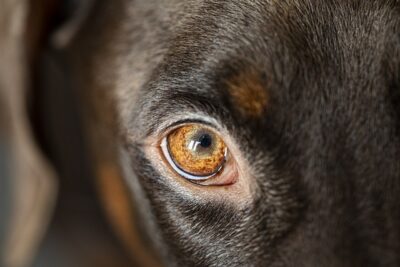
Anatomy of a Dog’s Eye
Understanding the Eyelid and Tear Gland
The anatomy of a dog’s eye includes several crucial components, such as the eyelids and tear gland, which play a vital role in maintaining eye health.
The tear gland, located beneath the outer eyelids, is responsible for tear production, which forms the tear film that protects and nourishes the eye.
Understanding these structures is essential, as issues like dry eye can arise, potentially leading to conditions like dogs cherry eye if left untreated.
Normal Functioning of the Tear Gland
The tear gland, also known as the lacrimal gland, is responsible for producing tears that keep a dog’s eyes moist and free from irritants.
Tears are spread across the surface of the eye by blinking and the movement of the eyelids, forming a tear film that provides oxygen and nutrients to the cornea.
This tear film also helps to wash away debris and reduce the risk of infection, contributing to the overall health of a dog’s eyes.
Role of Tear Production in Eye Health
Tear production plays a crucial role in maintaining the health of a dog’s eyes by providing lubrication, moisture, and protection against foreign particles.
Tears also contain enzymes that help prevent infections and promote healing if the eye is injured. Additionally, the tear film helps maintain clear vision by ensuring that the cornea remains smooth and transparent.

Causes of Cherry Eye in Dogs
Genetic Predisposition
Cherry eye in dogs is often caused by a genetic predisposition that leads to the weakness of the connective tissues supporting the third eyelid gland.
This weakness can result in the gland prolapsing and becoming visible, especially in certain breeds. The condition is characterized by the protrusion of the third eyelid gland, located in the lower eyelid, due to the weakening of the third eyelid cartilage.
Breed Susceptibility
Certain breeds, such as the Shih Tzu and Lhasa Apso, are more susceptible to cherry eye due to their genetic makeup.
These breeds often have a predisposition to weak connective tissues around the eye, which can lead to gland prolapse and the development of cherry eye. Owners of these breeds need to be aware of this potential issue and monitor their dogs’ eye health closely.
Trauma or Injury to the Eye
Cherry eye in dogs can also be caused by trauma or injury to the affected eye. This trauma can lead to the prolapse of the third eyelid gland, resulting in the characteristic reddish mass seen in cherry eye.
It’s important for pet parents to be cautious and seek veterinary care if their dog experiences trauma to one eye, as it can increase the risk of cherry eye developing in that eye or the other eye.
Underlying Eye Conditions
Cherry eye in dogs can be linked to underlying eye conditions, such as conjunctivitis, keratoconjunctivitis sicca (dry eye), or eyelid tumors. These conditions can cause inflammation or structural changes that lead to gland prolapse and the appearance of cherry eye.
Pet owners should be alert to clinical signs like redness, discharge, or changes in the eye’s appearance, and seek vet care if they suspect an issue.
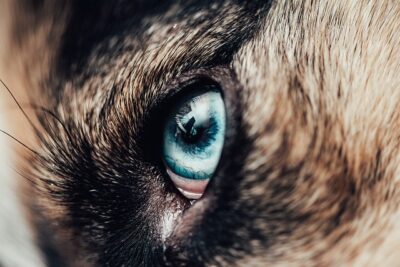
Symptoms and Diagnosis of Cherry Eye
Visible Red or Swollen Tissue in the Corner of the Eye
One of the most noticeable symptoms of cherry eye in dogs is the presence of visible red or swollen tissue in the corner of the eye. This swelling is often caused by the protrusion of the third eyelid gland, which is normally hidden from view.
Diagnosing cherry eye typically involves a physical examination by a veterinarian to assess the swelling and evaluate the condition of the connective tissue supporting the gland.
Excessive Tearing or Discharge
Another common symptom of cherry eye in dogs is excessive tearing or discharge from the affected eye. This can be a result of the irritation caused by the prolapsed gland.
Veterinarians diagnose cherry eye through physical examination, evaluating the eye’s appearance and any related symptoms.
Veterinary Examination and Diagnosis
Veterinary examination is crucial for diagnosing cherry eye in dogs. Vets will assess the eye’s appearance, including any redness, swelling, or protrusion of the third eyelid gland.
They may also perform tests to rule out other potential causes and determine the best course of treatment.
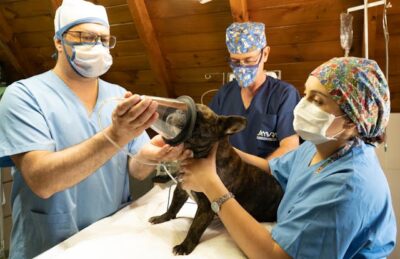
Treatment Options for Cherry Eye
Corrected Surgically
The primary treatment option for cherry eye is surgical correction, which involves various surgical techniques to reposition the prolapsed gland of the third eyelid back to its proper place.
This surgical treatment aims to surgically replace the gland and secure it in its correct position within a small pocket, ensuring that it functions properly.
The procedure is typically successful in correcting the cherry eye, although proper post-operative care is essential for a successful outcome.
Non-Surgical Management
Non-surgical management of cherry eye in dogs may be attempted in some cases, although it’s less common. This approach typically involves using eye drops or ointments to reduce inflammation and promote gland repositioning.
However, these methods are often less effective than surgical replacement of the gland back into its proper place.
Risks and Benefits of Each Treatment Option
When considering treatment options for cherry eye, it’s important to weigh the risks and benefits of each approach. Surgical correction offers a permanent solution by repositioning the gland and securing it in place, reducing the risk of re-prolapse.
However, surgery carries the inherent risks of any surgical procedure, such as infection or complications during healing. Non-surgical management with eye drops may provide temporary relief by reducing inflammation, but it’s less likely to correct the prolapse or prevent future occurrences.
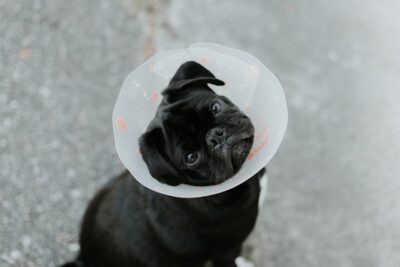
Recovery and Post-Treatment Care
Healing Process After Surgery
After surgery for cherry eye, the healing process typically involves keeping the affected eye clean and free from irritation. Your vet may prescribe medication or eye drops to aid in healing and prevent infection.
It’s essential to follow your vet’s post-operative care instructions closely to ensure the best outcome for your dog’s eye, especially if only one eye is affected.
Medications and Follow-up Visits
Post-treatment care for cherry eye in dogs often includes the use of medications such as antibiotics or anti-inflammatory drugs to aid in healing and reduce discomfort.
Follow-up visits with your veterinarian are crucial to monitor the eye’s progress and ensure proper healing. During these visits, your vet may recommend additional treatments or adjustments to the care plan based on the eye’s response to treatment.
Monitoring for Recurrence
After treatment for cherry eye, it’s important to monitor the affected eye closely for any signs of recurrence, especially in breeds prone to the condition. Regular check-ups with your veterinarian can help detect any early signs of recurrence and ensure prompt treatment if needed.
Additionally, maintaining good eye hygiene and avoiding factors that can stress the eye, such as rubbing or scratching, can help reduce the risk of recurrence.

Complications of Untreated Cherry Eye
Dry Eye Syndrome
Untreated cherry eye in dogs can lead to a condition known as dry eye syndrome (keratoconjunctivitis sicca), where the eye lacks sufficient tears to keep it moist and healthy.
This can result in discomfort, redness, irritation, and potentially more serious complications such as corneal ulcers or infections. It’s essential to seek vet care promptly to address cherry eye and prevent these complications.
Corneal Ulcers
Untreated cherry eye in dogs can lead to complications such as corneal ulcers, which are painful sores on the surface of the eye.
Corneal ulcers can cause discomfort, redness, discharge, and even vision loss if left untreated. It’s crucial to seek veterinary care promptly to address cherry eye and prevent the development of corneal ulcers.
Vision Impairment or Loss
Untreated cherry eye in dogs can potentially lead to vision impairment or loss, particularly if complications such as corneal ulcers or chronic dry eye develop.
These conditions can affect the clarity of vision and, in severe cases, lead to permanent damage. It’s important to seek veterinary care promptly to address cherry eye and prevent vision-related complications.

Preventing Cherry Eye in Dogs
Selective Breeding Practices
Preventing cherry eye in dogs can be aided by selective breeding practices that aim to reduce the likelihood of the condition occurring in offspring.
Responsible breeders focus on breeding dogs with a lower risk of cherry eye, helping to minimize the genetic predisposition for the condition.
By prioritizing the health and genetic diversity of their breeding stock, breeders can help reduce the incidence of cherry eye in future generations.
Regular Eye Examinations
Preventing cherry eye in dogs can be aided by regular eye examinations conducted by a veterinarian. These exams can help detect early signs of cherry eye or other eye conditions, allowing for prompt treatment.
By maintaining a schedule of regular eye check-ups, dog owners can help ensure their pets’ eye health and address any issues early on.
Avoiding Trauma to the Eye
Preventing cherry eye in dogs can be supported by avoiding trauma to the eye, as this can contribute to the development of the condition.
Dog owners can take precautions such as using gentle handling techniques, avoiding rough play that could lead to eye injuries, and providing a safe environment for their pets. By minimizing the risk of trauma, owners can help protect their dogs’ eye health and reduce the likelihood of cherry eye.
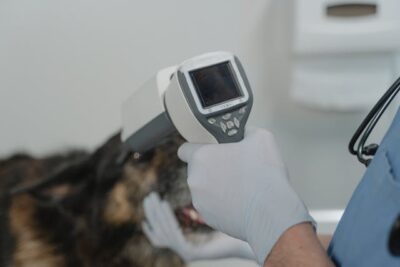
Conclusion
Importance of Early Detection and Treatment
Early detection and treatment of cherry eye in dogs are crucial for maintaining their ocular health and preventing complications.
Prompt veterinary care can help alleviate discomfort, reduce the risk of vision impairment, and prevent long-term damage to the eye. By addressing cherry eye early and seeking proper treatment, pet owners can ensure the best possible outcome for their furry companions’ eye health.
Summary of Key Points
Cherry eye, or prolapse of the third eyelid gland, is a common condition in dogs that requires early detection and treatment to prevent complications. It can affect various breeds, particularly younger dogs, and is characterized by a red, swollen mass at the corner of the eye.
Treatment options include surgical correction or non-surgical management, with surgical correction being the primary treatment choice to treat cherry eye for a permanent solution. Proper post-operative care and monitoring for recurrence are essential for a successful outcome.
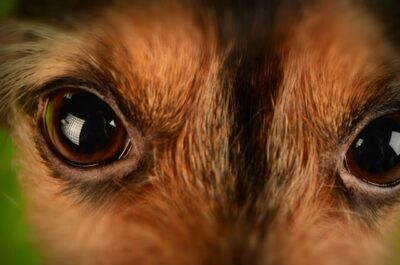
Encouragement for Responsible Pet Ownership
Responsible ownership plays a significant role in preventing and managing cherry eye in dogs. Regular eye examinations, gentle handling to avoid trauma, and seeking prompt veterinary care at the first sign of a problem are essential practices for maintaining eye health.
By being proactive and attentive pet parent, owners can help ensure a happy, healthy life for their furry companions.
If you’re looking for puppies for sale in Ohio and surrounding areas, explore our list of available puppies. Our puppies are thoughtfully bred from reputable breeders and are more than just pets; they are healthy, friendly, and cared for as part of our family.
We guarantee that your new family member will exceed your expectations, bringing joy and companionship into your home. Our puppies love children and are well-socialized, ensuring they are ready to become a beloved part of your family.
Frequently Asked Questions (FAQs): Cherry Eye in Dogs
- What is a cherry eye in dogs?
- Cherry eye in dogs, also known as prolapse of the third eyelid gland, occurs when the gland located in the third eyelid (nictitating membrane) protrudes from its normal position. This condition results in a red, swollen mass at the corner of the eye, giving it a “cherry-like” appearance.
- Why do dogs have three eyelids?
- Dogs have three eyelids to provide additional protection and moisture to their eyes. The third eyelid, or nictitating membrane, is a thin, translucent membrane that helps spread tears across the eye’s surface and protect it from debris and injury.
- How can I tell if my dog has a cherry eye?
- One of the most common signs of cherry eye in dogs is the presence of a red, swollen mass in the corner of the eye, diagonally across from the nose. This mass is caused by the prolapse of the third eyelid gland and is often accompanied by excessive tearing or discharge.
- Can cherry eye in dogs be treated without surgery?
- In some cases, cherry eye in dogs can be managed with non-surgical treatments, such as eye drops or ointments to reduce inflammation and promote gland repositioning. However, these treatments are often less effective than surgical correction for a permanent solution.
- Is cherry eye in dogs painful?
- Cherry eye in dogs can be uncomfortable, but it is not typically painful. However, the condition can lead to complications such as dry eye syndrome or corneal ulcers, which can be painful if left untreated.
- What happens if cherry eye in dogs is left untreated?
- If left untreated, cherry eye in dogs can lead to complications such as dry eye syndrome, corneal ulcers, or vision impairment. It is essential to seek veterinary care promptly to address cherry eye and prevent these complications.




